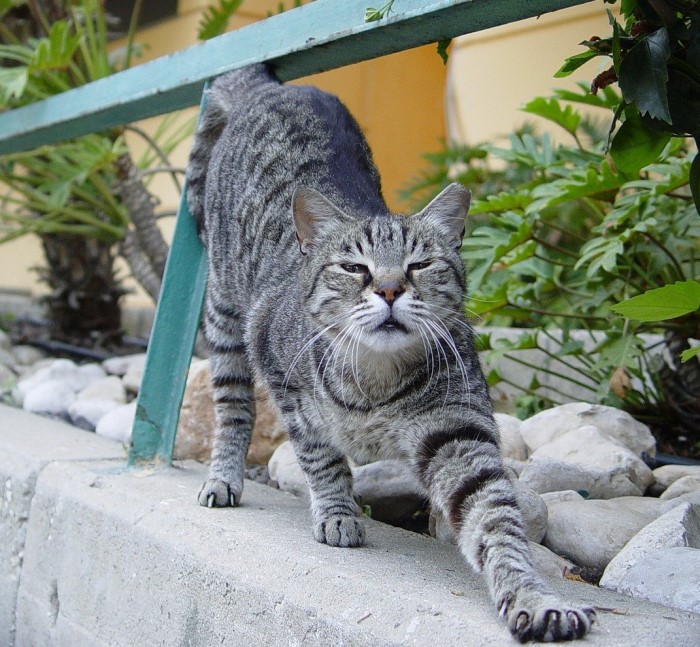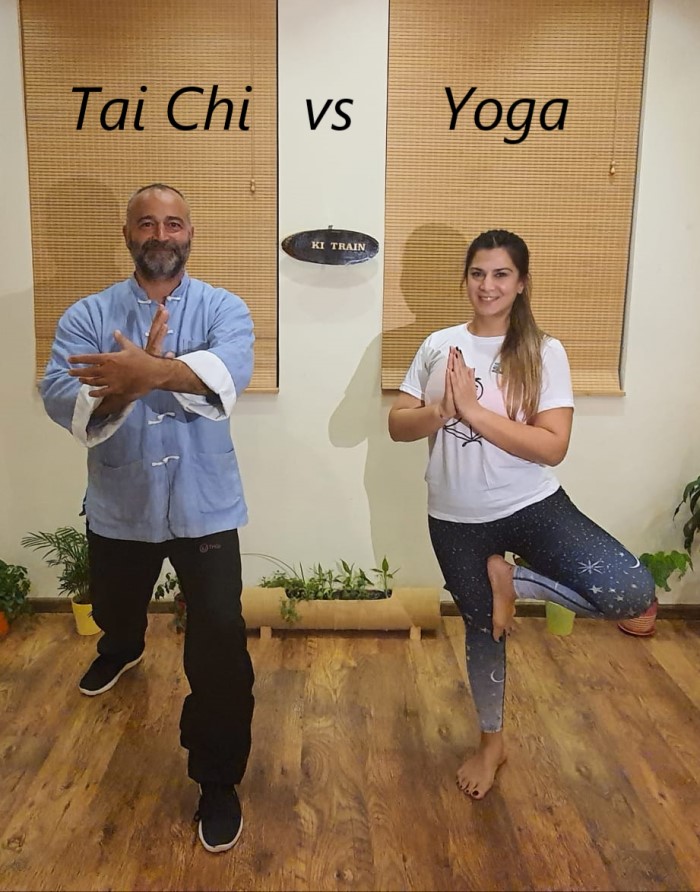I have been asked many times to explain the difference between Tai Chi and Yoga, especially by those who have not been directly exposed to Eastern culture, energy or spiritual arts. I have only practiced martial arts, so it would be unfair to express my personal opinion, which might possibly be biased. As a result, I decided to thoroughly study both the similarities and differences between Tai Chi and Yoga. What better way to finalize the study than debating with an experienced Yoga teacher?
Along the same topic, I studied the theoretical aspects of Yoga practice in order to compare them to Tai Chi. I came to the conclusion that, if practiced with high awareness and understanding, both have great purpose and results. Lets start by saying that they fundamentally differ by nature: Tai Chi is a martial art. Yoga is not.
Both Tai Chi and Yoga focus on improving health and wellbeing. Stretching is the common element considered by both arts as being beneficial for self-healing. They both aim for mind/body integration through vital energy: Chi or Prana.

‘In Tai Chi, you relax to stretch, in Yoga you stretch to relax.’
Breathing
When practicing Tai Chi we never hold our breath. We always relax the body, including the chest area. Holding the breath equals blocking the energy. In Yoga, some postures require holding the breath, which means muscle contractions in the chest. Tension contradicts relaxation.
Tai Chi practitioners breathe through the nose while Yoga practitioners use both nose and mouth.
Movements
Tai Chi stretches through fluid movements of the entire body. Yoga is mainly about holding postures rather than moving.
Tai Chi is about movement coordination and memorizing certain routines and sequence of movements. Yoga is about stances.
Postures
Tai Chi is about understanding where is the center of gravity and using continuous slow motion and the weight transition from one leg to another through specific steps.
Yoga postures include standing, sitting, laying on the floor and even head stances.

Spine
In Tai Chi we always keep the spine straight and aligned with the body. The spine never bends forward, backwards or sideways. We simply rotate the body coiling the spine.
Yoga postures arch the back, and in some postures the spine is dramatically bent sideways, forwards or backwards. The same goes for the neck.
Joints
In Tai Chi the joints are never fully bent, straightened or locked (following the 70% rule of moderation).
Many Yoga postures fully bend, straighten or lock the joints.
The instructors of both arts must ensure that their students do not overstretch while practicing.
Let Go vs Control
Tai Chi is about letting go.
Yoga is about control.
Circular vs Linear
Tai Chi is circular.
Yoga is linear.
Traditional Chinese Medicine vs Ayurveda
Tai Chi is based on TCM – Traditional Chinese Medicine. The aim is seeking balance between Yin and Yang, a dynamic balance between the five elements: Water, Wood, Fire, Earth and Metal.
Yoga is based on Ayurveda. The aim is seeking balance between the three doshas: Vata, Pitta and Kapha.
Final Conclusion
Both Tai Chi and Yoga are ancient arts which originated from different purposes. Tai Chi has been developed as a martial art, for self-defense purposes. Yoga has been introduced for spiritual practices.
In our days, both arts are practiced mainly for maintaining the health and wellbeing, building physical and mental strength. Both have a common goal which can be reached through different paths. The goal is inner peace and calmness.
